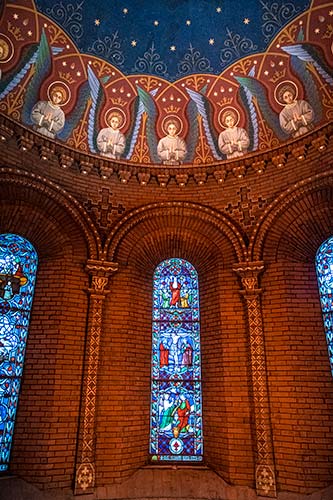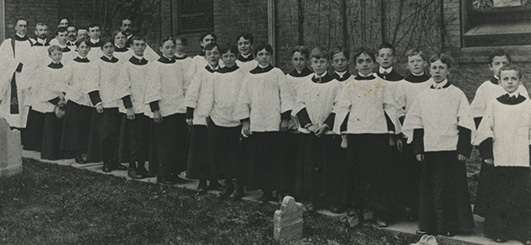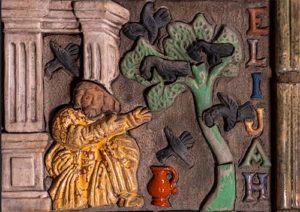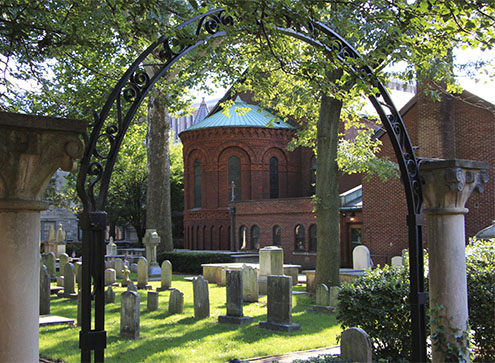The Beauty of Holiness

Saint James apse, 2019. Courtesy of Nick Gould Photography, Lancaster, PA.
The psalmist urges those who know God to worship the Lord in the beauty of holiness. Prayerful liturgy, inspiring music, and fine architectural design and artistry have become an integral part of Christian faith and worship at Saint James due to pioneering clergy and creative artists.
Like many Episcopal churches, the early design of Saint James came from the Protestant emphasis on the primary importance of preaching in worship and the Enlightenment emphasis on rationalism. When the original stone church was razed and a brick one built in 1820, the furniture and decorations were minimal—only the words of the Ten Commandments, the Lord’s Prayer and Apostles’ Creed decorated the walls. Worship consisted primarily of preaching and the reading of prayers and scripture. While Saint James had an organ, there was no tradition in the Episcopal Church of congregational singing, apart from the Psalms.

Saint James choir boys, 1902.
By the late 1800’s, Saint James was a very different church. Successive clergy, formed by the Oxford Movement which reasserted the church’s catholic heritage, encouraged beauty in worship, architecture, and soul-stirring music as well as congregational participation. Candles, flowers and silk altar frontals adorned altars. In the 1820s, the Rev. William Augustus Muhlenberg brought congregational hymn-singing first to Saint James and then to the entire Episcopal Church. Others changed the church building. The Rev. Edward Shippen Watson who was rector 1869-77, employed Charles M. Burns from Philadelphia to change the church from a meeting house to a Romanesque basilica with a stone altar and an apse decorated with angels.

A tile showing the biblical story of Elijah and the ravens, part of a frieze of tiles around the altar. Installed in 1916, it was produced by the Moravian Pottery and Tile Works, Doylestown, PA. Courtesy of Nick Gould Photography, Lancaster, PA.
His successor, the Rev. Cyrus Knight who served as rector until 1889, enhanced the church with a bell tower, and more importantly, introduced a vested choir of men and boys which led to a flourishing of music in the twentieth century under the direction of two remarkable organists and choirmasters, George B. Rodgers and Frank A. McConnell. Under the latter, the Saint Cecilia choir for girls and women was formed in 1947. Today Saint James is renowned nationally for the richness of its worship  whether accompanied by choral music, Gregorian chant, or rock and roll.
whether accompanied by choral music, Gregorian chant, or rock and roll.
Today Saint James has a beautiful campus with a historic churchyard that works as a pocket park in the city, a welcoming cloister and fountain, a federal-style rectory (1847) with charming window boxes, and a fine neo-Georgian parish house opened in 1904, designed by Lancaster’s foremost architect C. Emlen Urban.
